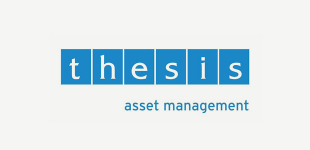“Three charts showing why EM investors should be buying copper miners” – RWC’s Malloy
Emerging markets’ dominant position in the copper industry is presenting investors with an opportunity to play the metal’s improving prospects, RWC Partners’ John Malloy has said.
Increasing demand for the commodity from industries including car manufacturers, coupled with a huge decline in reserves, means the price of copper has recovered sharply from lows seen in 2015, despite a levelling off in demand for the metal from China, the world’s growth engine.
Malloy, manager of the $4.5bn RWC Global Emerging Markets strategy, says a decline in the quality of the ore being mined – combined with the changing demand dynamics – means some miners exposed to copper are now in a sweet spot.
“As incremental supply continues to face challenges, the outlook for the price of the base metal is positive,” Malloy said.
“Increased penetration of electricity markets and renewable energy globally will drive demand higher, and there could be significant demand from transformational applications such as electric cars.”
As a result, Malloy has invested in a number of copper miners via the strategy, including First Quantum Minerals, KAZ minerals, and Cia de minas Buenaventura.
“We are currently invested in three copper miners. Each of them increased capital expenditure over the last few years and now stand ready to gain from increased production volumes in a period of higher prices. As a result, cash flows will increase significantly over the next few years.”
Below Malloy, whose RWC Global Emerging Markets fund has returned 32% over the last year, versus the sector average return of 22%, highlights the key stats behind the copper trend.
PRICE RECOVERY

Following a seven year rally in copper and other commodity prices, there was a sharp pullback in 2008 as the financial crisis hit the world economy. Copper then rallied 270% from the bottom in 2009, reaching highs of $4.60 in 2011.
As incremental demand from China began to level off and Peru developed new mines the price started to fall gradually. This decline coincided with a fall in energy costs and lower dollar labour costs as producer-country currencies weakened against the dollar.
We began to review the metal back in 2015 when the price was approaching $2 per pound, as copper was trading at a mere 5% premium to the marginal cost of production; an attractive price for a metal with considerable potential.
DEMAND SURGE

Demand is coming from a variety of sources, including for use in power grids, air conditioning, electric vehicles (For every addition of 10 million electric cars to annual global sales, copper demand will increase by 1.4mn tons which is 6% of today’s demand) and power generation.
Increased penetration of electricity in emerging markets and renewable energy globally will drive demand higher. Additionally, there could be significant demand form transformational applications such as electric cars.
SUPPLY DECLINE

There are 2.1 billion tonnes of copper in identified resources and 3.5 billion tonnes in unidentified resources. Despite large amounts of the base metal around the world, it is not all equally accessible.
Ores are of different grades and are mined at varying depths. The ore that is least costly to access has been mostly exploited and additional resources are of lower quality and harder to access.
Chile is the largest producer of copper, accounting for 27% of global production. Codelco, the state-run mining company, produces one third of the country’s copper. In the last 10 years we have seen supply growth coming through from Peru, China, Congo, Kazakhstan and Mexico.
However South American supply (Peru/Chile) has already peaked due to decreasing ore grades and increasing capital intensity. Authorities in China have also said that scrap imports will be banned from the end of 2018 due to environmental concerns. This will take away 300 thousand tonnes of supply which is equivalent to 1.3% of the global market.
